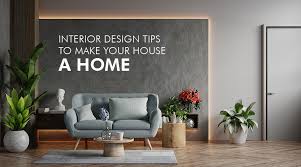Your Right as a Tenant
- June 25, 2025
- Real Estate, Text Blog
The idea of renting a home in paradise may seem like a dream — but when it comes to life in an island... Read More

Deciding how to decorate your new home is an exciting opportunity that allows you to put your stamp on your living space.
Here’s how to get started:
1. Make a home decoration plan.
Do not buy furniture or decor items until you have had plenty of time to consider and evaluate your new home’s layout, lighting, and architectural features. Make a mood board find lots of inspiration online by taking photos of rooms, colors, furniture, and accessories that you love.
2. Budget
Set the maximum amount you can afford to spend. The first month should be focused on furnishing essentials such as a sofa and dining table before you begin adding small items.
3. Create a Color Palette
Begin with a neutral. Use neutral colors on walls, significant furniture, and flooring to form a versatile and steady base you can construct on with various design elements.
Add bright colors Choose two or three bright colors to brighten your homes, such as accent cushions, carpets, artwork, and home decor objects.
Decide the order the colors will go. Have a simple color palette for the entire house to link the rooms.
Your house doesn’t have to be all the same color, but you want the color to naturally move from one spot to the next.
4. Buy the big stuff
Make the most of your money by buying quality furniture. Items that you use regularly, like a sofa or bed, should be long-lasting and comfortable. Create a statement
5. Functional Decor
Choose pieces that are beautiful and functional, such as stylish storage solutions, decorative trays, as well as multi-purpose furniture items such as an ottoman with storage.
6. Mix and Match Styles
Blend Old and New: Mix modern pieces with vintage finds to develop a layered, lived-in feel. This approach imbues your living space with character and stops it from looking overly sterilized.
Variety in Textures: Add interest to your space by mixing different textures like velvet, wood, metal, and glass.
Pattern Play: Pair various patterns but make sure there is a balance between bold patterns and solid colors to prevent your space from looking too busy.
7. Maximize Natural Light
Light Curtains: Allow as much natural light as possible into your rooms by using light, airy curtains. Sheer fabrics such as linen, cotton, or silk work well in many rooms, filtering light while maintaining your privacy.
Mirrors: Position mirrors strategically to reflect light, making the rooms appear bigger. Place a big mirror on the wall of your living room or one above a console table.
Lighting Layers: Create a warm and inviting house by layering ambient, task, and accent lighting. Use floor and table lamps, as well as pendant lights to add to the lighting levels.
8. Personalize Your Space
Display Items of Interest: Exhibit travel mementos, heirlooms, and family photographs to create a unique and meaningful living place.
Art and Photography: Use artwork or photography that means something to you. Incorporate a gallery wall for a more personal touch, with different frames and sizes for a fusion look.
DIY Projects: Add a creative and personal touch to your living space by undertaking DIY projects such as making your hanging art, painting furniture, or stitching custom curtains.
9. Additional Greenery
Houseplants: Houseplants add life and color to spaces. Few houseplants such as succulents, ferns, and snake plants are low-maintenance and are suitable for indoor environments.
Plant variety: Add various sizes, types, and shapes of plants to create focal points in your home. You can place a massive plant in an empty corner or groups of small ones on a shelf or table.
Planters: Make a choice based on your home’s style, deciding on modern ceramic pots, rustic terracotta, or more sleek metal planters.
10. Be Mindful of Generating Functionality
Traffic Flow: Make enough room for easy walking through each room without blocking pathways or windows.
Storage Solutions: Get creative in hiding some things in plain sight, available in smart furniture items like ottomans and benches, or beds with drawers. You may also take advantage of flexible pieces such as a sleepover sofa.
Variable Spaces: Invest in 2-in-1 or multi-space furniture if you have limited space or need to use some parts of the house otherwise at different times.
11. Trendy accents
If I desire using trendy items, I will concentrate on acquiring items I change whenever I find a prettier other version like wall coverings or pillows.
Timeless Base: An excellent way to keep trendy things from affecting the house quality is keeping the large, permanent, or heavy details like walls, flooring, or furniture neutral or safe.
12. Do not hurry
Decorating is a process similar to one of building trust; should be patient. And do it in the tops to bottoms; so that the foundational pieces go first followed by the finishes.
Seasonal upgrades open my home to a variety of configurations that may seem too many in my current way of life; hence I should embrace flexibility that comes with changing conditions of life. Enjoy creating a new home by making it as filled up as you would while on a vacation.

The idea of renting a home in paradise may seem like a dream — but when it comes to life in an island... Read More

Picture waking to the sound of waves, spending your afternoons snorkeling coral reefs and hiking through the National Park and, come sundown,... Read More

If you’ve ever fantasized about living in a tropical paradise, St. John in the United States Virgin Islands might just be whispering your... Read More
Log in
Please enter your username or email address. You will receive a link to create a new password via email.
Join The Discussion